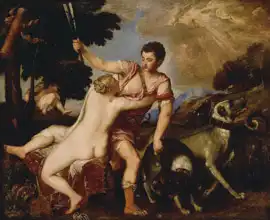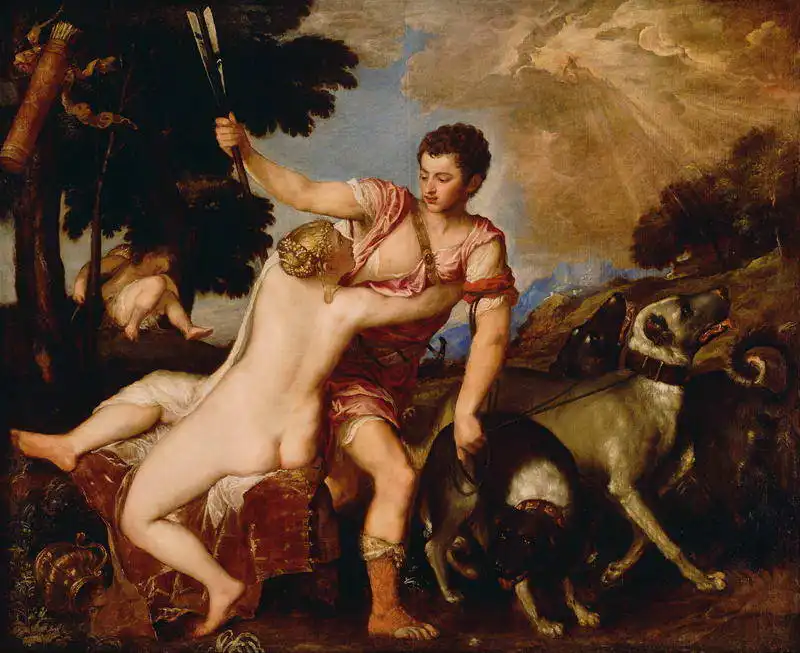About this finishing
Print. The image is printed on the top quality 10-ink HP Z9PS printer on HP matte 270 g / m2 paper. You can choose any size to an accuracy of 1 cm. A margin of 5 cm around the image is added to the size of the motif.


You can find a detailed description about our finishings
here.
Venus and Adonis
Date:
1554Medium:
oil on canvasLocation:
Museo del Prado, MadridDimensions:
207 x 186Venus and Adonis is a large-scale painting by the Italian late-
renaissance artist
Tiziano Vecelli Da Cadore . Tizian depicted a similar theme several times. This particular version belongs to a series of mythological works called Poems, which was created for King Philip II of Spain. The original version from 1520 was damaged while being transported to the King's palace and was later replaced by the version that now resides in the Museo del Prado in Madrid. The plot of the painting is based on a legend from Ovid, a gifted poet living at the turn of the "BC" and "AD" periods.
Tizian presents us with a scene in which the young Adonis leaves Venus, who is desperate to keep the man with her. The painting is meant to be a metaphor for life and earthly affairs, which are stronger than love (represented in the painting by Cupid hidden in the shade of a tree with arrows hanging from a branch, the power of which thus has no effect).
Tizian painted picture Venus and Adonis in 1554. Prevailing color of this fine art print is vivid and its shape is landscape. Original size is 207 x 186. This art piece is located in Museo del Prado, Madrid. This image is printed on demand - you can choose material, size and finishing.
Full name
Tiziano Vecelli Da Cadore (1485-1576)He came from a family of lawyers and notaries. At nine years of age, he left to study in the contemporary centre of art: Venice. There, he met with not only
Leonardo da Vinci and
Albrecht Dürer. Tizian’s uncle promoted and developed his talent, until one day the young artist was admitted to the workshop of
Giovanni Bellini. His name worked its way into the minds of potential customers. When his master died, he became the main Venetian painter. His customers were Venetian Doges, for whom he not only painted portraits (
Jacopo Strada). Tizian’s paintings have become a symbol of luxury and wealth. After the coronation of Emperor Charles V, he was awarded a knighthood. In 1542, at the request of Pope Paul III, he moved to Rome, where he replaced
Michelangelo. Tizian laid the foundations for the
Renaissance and inspired artists, such as
Rembrandt and
Rubens.

